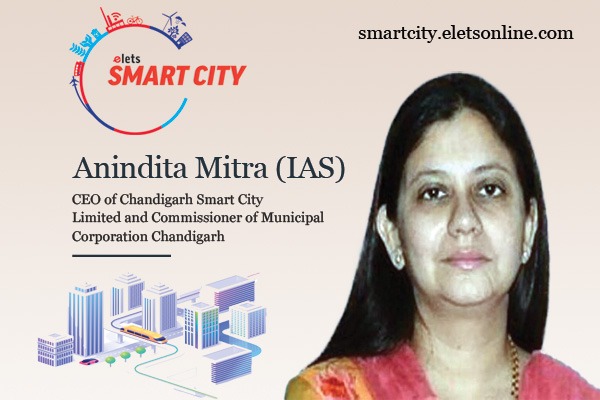
Through effective governance, planning and better utilisation of technology, the city of Chandigarh is transforming incredibly. Anindita Mitra (IAS), CEO of Chandigarh Smart City Limited and Commissioner of Municipal Corporation Chandigarh shares this in an exclusive interview with Priya Yadav of Elets News Networks (ENN). Edited excerpts:
Could you share some valuable practices from Chandigarh that other cities can learn from?
When discussing the Chandigarh Smart City project, one of the most outstanding initiatives we have implemented is the ITMS (Integrated Traffic Management System) paired with the ATCS (Adaptive Traffic Control System). This particular project is frequently highlighted as a prime example of our successes over the past year. Additionally, our ICCC (Integrated Command and Control Center) has exhibited exceptional performance.
Shifting focus to the municipal corporation aspect, we have introduced a plethora of initiatives. Among them, there is one initiative that holds particular significance for me – the provision of security coverage for all our employees, whether they are regular, contractual, or outsourced. This scheme stands out as the first of its kind among municipal bodies across the entire country.
Under this scheme, we offer a 40 lakh insurance cover for accidental deaths, a 12 lakh cover for natural deaths, and in cases where there are two daughters, each daughter receives a 12 lakh grant for education. All associated costs are free of costs and borne by the bank.
When did this initiative to provide security coverage to all employees of the Corporation commence, and what prompted its implementation? And also, What changes have ITMS and ATMS brought?
This initiative has been in operation for a year now. Our aim was to establish a safety net for families. While regular employees had their benefits and insurance, contractual and outsourced workers often lacked these provisions. The initiative aimed to alleviate the financial burdens families face when the primary breadwinner passes away. This initiative falls under the social sector. The other two I’d like to highlight are ITCS and ATMS. Ever Since their inception, these systems have substantially decreased road accidents, reduced congestion, and fostered better adherence to traffic rules. The impact is evident in the data. Initially, compliance with traffic rules, especially at night, was lacking, resulting in accidents involving cyclists and pedestrians. These systems have also freed up police personnel for more crucial tasks.
The traffic management system generates a substantial amount of data. Has this contributed to informed decision-making?
Absolutely. ATCS data aids real-time decisions, while ICCC data identifies high-crime and congested areas. This information is quite helpful in decisionmaking, such as selecting locations for cycling stations or traffic management structures. The data empowers us to make informed and effective choices.
What insights can be drawn by other cities from the waste management practices employed in Chandigarh?
For the past two years, our municipality has undertaken a comprehensive approach to waste management. While the conventional practice in most cities involves the segregation of waste into two main categories, namely wet and dry waste, our approach has been considerably more intricate. We have meticulously categorised waste into 10 to 12 distinct segments, each intricately linked to specific recycling facilities and processors.
A noteworthy example lies in our management of sanitary waste, an aspect in which only a handful of cities have managed to excel. Commencing with a modest collection of a mere 15 kilograms daily back in November 2021, we have now progressed to effectively overseeing a staggering 500 kilograms of sanitary waste on a daily basis. This waste is diligently subjected to proper disposal and recycling procedures.
Furthermore, our initiatives extend to innovative projects like “Project Arpan,” which involves the conversion of temple floral waste into a range of products including incense sticks, candles, and various other items. This endeavour not only underscores our commitment to waste reduction but also highlights our dedication to finding novel applications for seemingly disposable materials.
In addition to these initiatives, the establishment of our Reduce, Reuse, Recycle (RRR) centre stands as a testament to our dedication to fostering a circular economy. This centre serves as a platform to encourage community participation, urging individuals to contribute used clothing, electronics, and footwear for repair, refurbishment, and subsequent redistribution.
In conclusion, the waste management strategies implemented in Chandigarh offer valuable insights for other urban centres. The intricacy of our waste categorization, the success achieved in managing sanitary waste, the innovation demonstrated through initiatives like “Project Arpan,” and the establishment of a centre dedicated to resource recovery all provide a holistic model that other cities can consider adopting and adapting to their unique contexts.
Could you discuss city beautification efforts?
The beauty of the city isn’t really due to recent efforts. It goes back to its original design. The architects designed beautiful arterial roads and green belts. This is the city which really breathes. We have 1800 parks acting as the city’s lungs. While we maintain it, the original vision is from the architects.





















